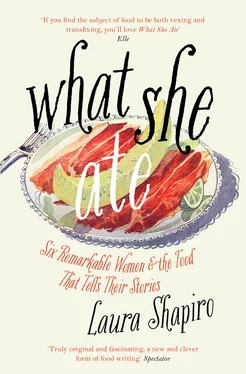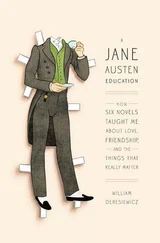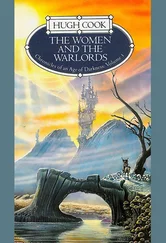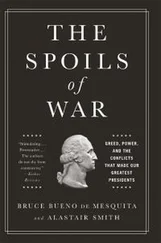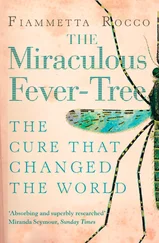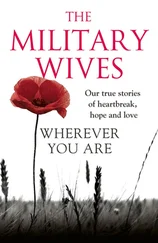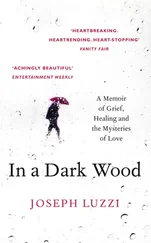One night, bleary with insomnia, I had been staring at a bookshelf for a long time when I finally pulled out a biography of Dorothy Wordsworth. All I hoped to gain from this choice was a short, peaceful visit to the Lake District, where she famously kept house for her brother William—a visit that would lull me back to sleep. Sure enough, here was the calm, sweet record of their years in Dove Cottage: William devoting himself to poetry, Dorothy devoting herself to William, both of them aloft in reveries inspired by the mountains, the clouds, the birds, and of course the daffodils. Then William married, I skipped a few chapters, and Dorothy turned up in a dreary village far from the Lake District, now making a home for her nephew, the local curate. It was winter; she seemed to spend a lot of time trying to improve his sermons, a desultory cook was giving them black pudding for dinner—and suddenly I was wide-awake. Black pudding, that stodgy mess of blood and oatmeal, plunked down in front of Dorothy Wordsworth, the daffodil girl? There had to be a story.
And there was—a story that opened up a startling perspective on a woman I thought I knew. As soon as I was jolted into focusing on how she cooked and ate, the whole picture of her life seemed to shift, like a holographic image that changes as you tilt it. I had always imagined her as a kind of folk heroine of the Romantic movement, enshrined in the imagery of the Lake District until at fifty-seven she began a descent into sickness and dementia. Conventional wisdom sees these later years as a tragedy and leaves them at that, but conventional wisdom isn’t looking at the food. The food was telling me something else about Dorothy’s long decline, something I found both disturbing and oddly reassuring. Dorothy’s food story became my first.
In this book, I take up the lives of six women from different centuries and continents—women who cooked and women who didn’t—and in recounting these lives, I’ve placed the food right up front where I believe it belongs. Food, after all, happens every day; it’s intimately associated with all our appetites and thoroughly entangled with the myriad social and economic conditions that press upon a life. Whether or not we spend time in a kitchen, whether or not we even care what’s on the plate, we have a relationship with food that’s launched when we’re born and lasts until we die. As a writer who’s been curious for decades about what prompts people to cook and eat the way they do, I’ve often marveled at the emotional and psychological baggage we bring to the table, baggage we’ve generally been lugging around since childhood. Cooking, eating, feeding others, resisting or ignoring food—it all runs deep, so deep that we may not even notice the way it helps to define us. Food constitutes a natural vantage point on the history of the personal.
Today, of course, popular culture is on a culinary binge; and so much personal writing is now devoted to gazing back upon the kitchen and the table that we’ve had to invent a new literary genre, the food memoir, to contain all of it. But this mania is recent. Biography as it’s traditionally practiced still tends to honor the old-fashioned custom of keeping a polite distance from food. We’re meant to read the lives of important people as if they never bothered with breakfast, lunch, or dinner, or took a coffee break, or stopped for a hot dog on the street, or wandered downstairs for a few spoonfuls of chocolate pudding in the middle of the night. History respects the food stories of chefs and cookbook writers and perhaps takes note when a painter or a politician happens to be a gastronome as well; but in the published accounts of most other lives, the food has been lost.
And it really is a loss, because food talks. Food talks whether the meal is sitting on the table or never leaves the recipe box. In May 1953 the popular and prolific food writer Nell B. Nichols, who had a regular column in the Woman’s Home Companion called “Nell B. Nichols’ Food Calendar,” selected May 8 as the right day to offer a recipe for peanut-butter sandwiches that had been dipped in an egg-and-milk batter and then fried. We’ll never know the reactions of any family that might have been offered this surprising variation on French toast. We’ll never even know if a homemaker was inspired to prepare it. What we do know is that Nell B. Nichols, tapping into the food corner of the nation’s collective imagination, pulled out a culinary artifact worthy of being titled American Gothic. The food tells us everything. It tells us about our powerful loyalty to peanut butter, first of all, and our willingness to follow it across any terrain. It tells us how midcentury American cooks liked to color outside the lines while holding fast to the coloring book. And of course it tells us about the national palate, stunned into acquiescence after decades of gastronomic novelties dreamed up by the food industry.
Food always talks. The arts patron Mabel Dodge Luhan, who became friends with Gertrude Stein and Alice B. Toklas, wrote once that Stein “had a laugh like a beefsteak. She loved beef, and I used to like to see her sit down in front of five pounds of rare meat three inches thick and, with strong wrists wielding knife and fork, finish it with gusto, while Alice ate a little slice, daintily, like a cat.” Many, many people wrote about visiting Stein and Toklas in their famous Paris flat, but we have few descriptions as succinct and revelatory as this one. Luhan noticed the food.
Food talks—but somebody has to hear it. William Knight, the philosophy professor who was one of the first and most dedicated scholars of the Wordsworths, read through Dorothy Wordsworth’s journals early on and decided they should be edited for publication. Dorothy had been a close observer of William as he worked, and the two of them were at the center of a swirl of family and literary relationships important to his poetry. Unaccountably, however, the journals were also littered with what Knight called “numerous trivial details” of Dorothy’s housekeeping. He couldn’t think of a single reason why posterity would ever want to know what Dorothy cooked or sewed, and it certainly didn’t occur to him that the prose devoted to such chores might be worth reading for its own sake. One gets the sense from Knight’s brief preface to the journals, which he published in 1897, that he was a little irritated by all the meals and domestic doings that Dorothy insisted on telling him about, possibly at the expense of providing more information about the great Romantic. “There is no need to record all the cases in which the sister wrote, ‘To-day I mended William’s shirts,’ or ‘William gathered sticks,’ or ‘I went in search of eggs,’ etc. etc.,” Knight explained wearily. He assured readers that he had snipped out only the material that plainly lacked “literary or biographical value.” Later editors put the shirts and the eggs right back in; and to this day the Grasmere Journal is recognized as a classic of intimate prose, with a charm that has outlasted a fair amount of her brother’s verse.
This dismissive attitude toward women’s domestic lives continued to flourish for another century or so. Indeed, the very term “trivial” would come to haunt the post–World War II British novelist Barbara Pym, who loved nothing better than to include a mention of tinned spaghetti when she was constructing a character, though she knew such homely references were considered unworthy of serious fiction. “People blame one for dwelling on trivialities,” reflects one of her heroines, who can’t figure out why the lemon marmalade is taking so long to jell. “But life is made up of them.”
Dorothy Wordsworth and Barbara Pym, both irresistible to me precisely because of those “trivial details,” were the first two women I chose for this book. Over the next few years they were joined by an Edwardian-era caterer, Rosa Lewis; a First Lady, Eleanor Roosevelt; a notorious mistress, Eva Braun; and an editor, Helen Gurley Brown. Obviously none of these women represents anyone but herself: each stood out dramatically from the female world into which she was born, and each has attracted enough scholarship, journalism, anecdotes, gossip, and downright fantasy over the years to win a secure spot in history. But what struck me as I followed the paper trail through each life was that while extraordinary circumstances produce extraordinary women, food makes them recognizable. If the emotional substance of these food stories rings familiar, it’s because they tend to be as messy and discomfiting as our own.
Читать дальше
